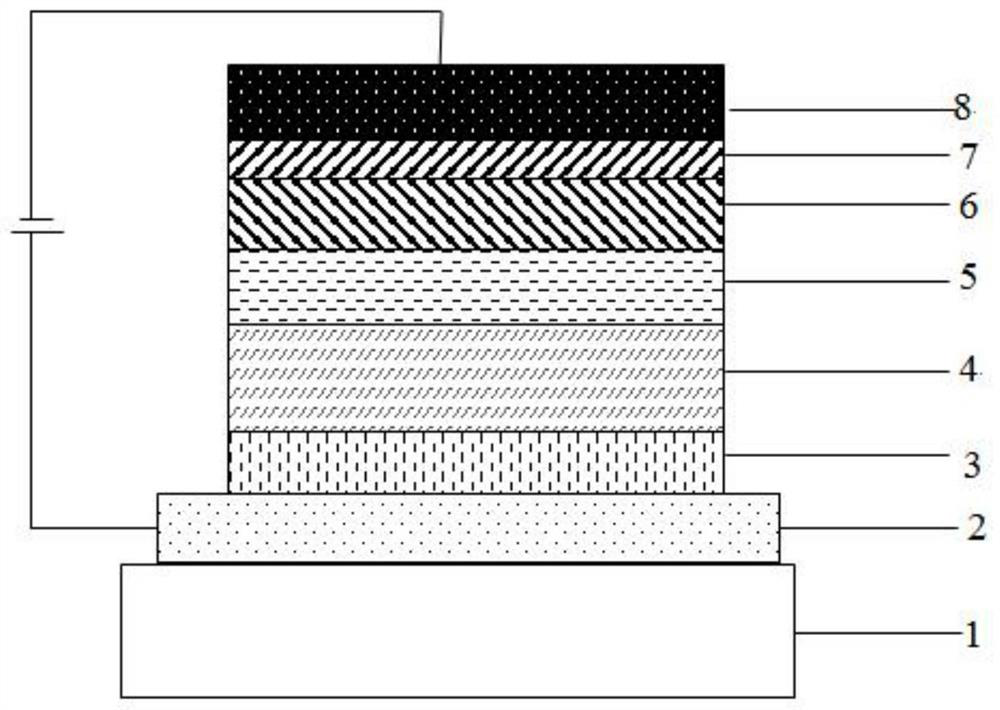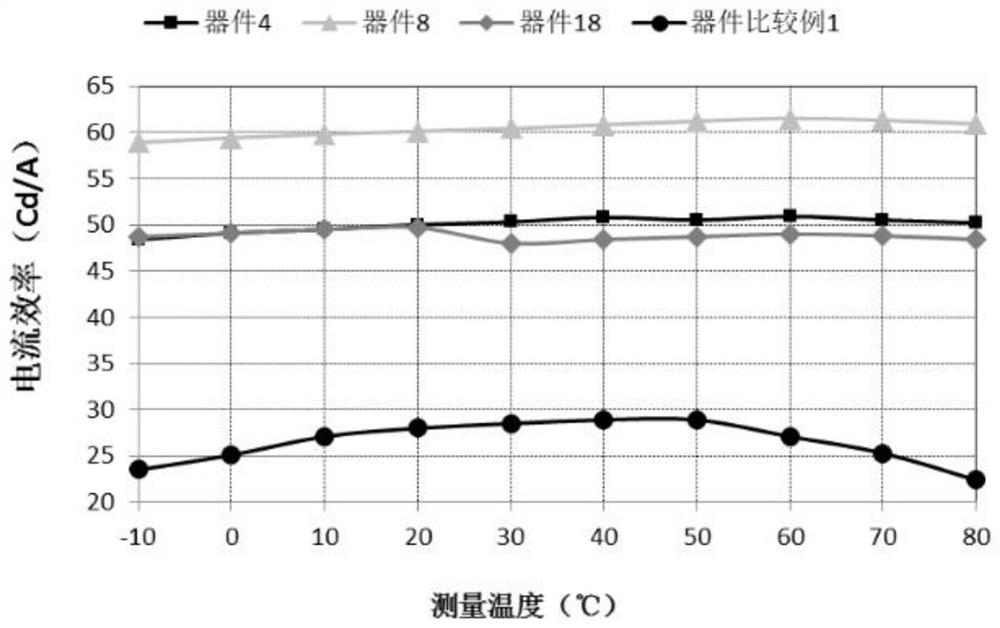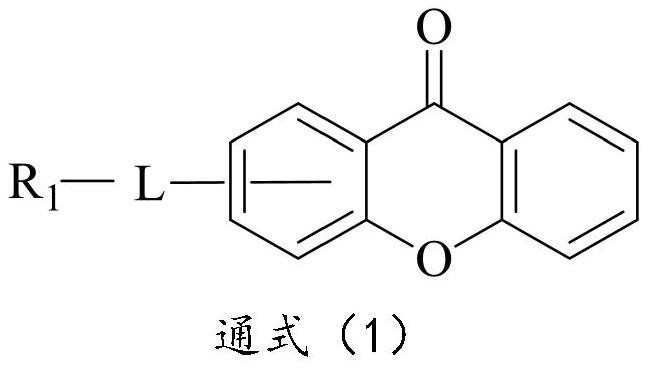A compound with xanthone as the core, its preparation method and its application in oled
A technology of xanthone and compound, applied in the application field of OLED, can solve the problems of difficult and high exciton utilization rate, high fluorescence radiation efficiency, low S1 state radiation transition rate, efficiency roll-off, etc., to avoid aggregation effect. , good industrialization prospects, the effect of improving the service life
- Summary
- Abstract
- Description
- Claims
- Application Information
AI Technical Summary
Problems solved by technology
Method used
Image
Examples
Embodiment 1
[0055] The preparation of embodiment 1 intermediate A
Embodiment 1-1
[0056] The preparation of embodiment 1-1 intermediate A1
[0057]
[0058] In a 250mL three-neck flask, blow nitrogen, add 0.01mol raw material M1, 0.012mol raw material N1, 150mL mixed solvent of toluene and ethanol (toluene 100mL, ethanol 50mL) and stir to mix, then add 0.02mol potassium carbonate solution (2M) , 1×10 -4 mol Pd(PPh 3 ) 4 , heated to 120°C, reflux reaction for 24h, sampling plate, showing no bromide remaining, the reaction was complete; naturally cooled to room temperature, filtered, and the filtrate was subjected to vacuum rotary evaporation (-0.09MPa, 85°C), and passed through a neutral silica gel column , to obtain intermediate 1;
[0059] Dissolve 0.01mol of intermediate 1 in 100mL of o-dichlorobenzene, add triphenylphosphine, react at 180°C for 12-24h, cool to room temperature after the reaction, filter, spin the filtrate, and pass through a silica gel column to obtain the intermediate A1.
[0060] The HPLC purity 99.78% of intermediate A1, yield...
Embodiment 1-2
[0061] The preparation of embodiment 1-2 intermediate B1
[0062]
[0063] In a 250mL three-necked flask, nitrogen was introduced, 0.01mol of intermediate AI, 0.012mol of raw material VI, 150mL of toluene were stirred and mixed, and then 6×10 -5 mol Pd 2 (dba) 3 , 6×10 -5 mol of triphenylphosphine, 0.03mol of sodium tert-butoxide, heated to 105°C, refluxed for 24 hours, sampling plate, showed no remaining bromide, and the reaction was complete; naturally cooled to room temperature, filtered, and the filtrate was rotary evaporated until there was no distillate, passed Neutral silica gel column to obtain intermediate XI;
[0064] Under nitrogen protection, 0.01mol intermediate XI, 0.0075mol bis(pinacolate) diboron, 0.0005mol Pd(dppf)Cl 2 1. Dissolve 0.025 mol of potassium acetate in toluene, react at 105°C for 24 hours, take a sample and point the plate, react completely, cool naturally, filter, and spin evaporate the filtrate to obtain a crude product, pass through a neu...
PUM
 Login to View More
Login to View More Abstract
Description
Claims
Application Information
 Login to View More
Login to View More - R&D
- Intellectual Property
- Life Sciences
- Materials
- Tech Scout
- Unparalleled Data Quality
- Higher Quality Content
- 60% Fewer Hallucinations
Browse by: Latest US Patents, China's latest patents, Technical Efficacy Thesaurus, Application Domain, Technology Topic, Popular Technical Reports.
© 2025 PatSnap. All rights reserved.Legal|Privacy policy|Modern Slavery Act Transparency Statement|Sitemap|About US| Contact US: help@patsnap.com



